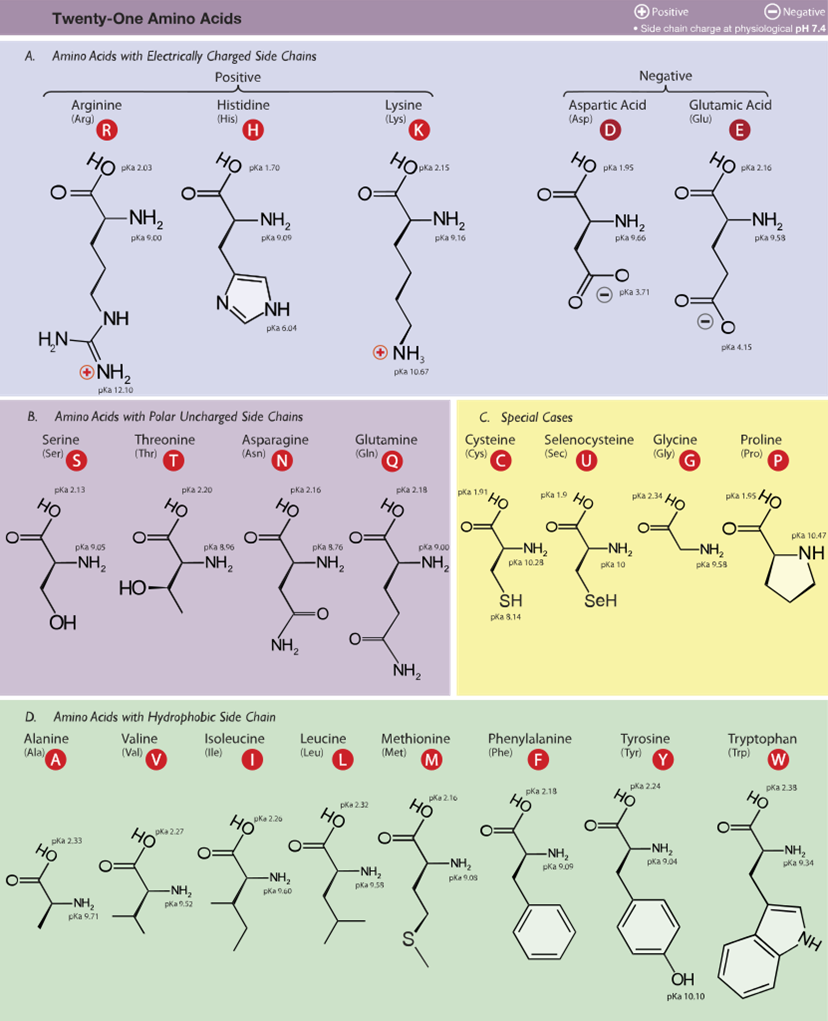3.5 Amino Acids
Amino acids are building blocks that join together to form proteins
-

Figure 3.13 Basic structure of an amino acid.
Amino acid molecules have a central carbon-hydrogen molecule attached to three parts:
- the carboxylic acid group, containing carbon and oxygen
- the amino group, containing nitrogen and hydrogen
- the side chain (the R group), which varies by amino acid and contains one or more of the following: hydrogen, carbon, oxygen, nitrogen, sulfur, phosphorus, sulfur, and selenium. The 21 common amino acids with their various side chains are depicted below.

The amino acids pictured above combine to form proteins when the carboxyl group from one amino acid and the amino group from another chemically react and form a bond. RNA helps guide the amino acid assembly to create a chain of amino acids called a polypeptide or a protein. This chain of amino acids folds into a functional protein based on the properties of the amino acid side chains. The resulting proteins can have a variety of functions in an organism based on each protein’s shape. Watch this short video describing the function of various proteins:
Check Yourself
- By OrgoGuy2theRescue - Own work, CC0, https://commons.wikimedia.org/w/index.php?curid=55068925 ↵

